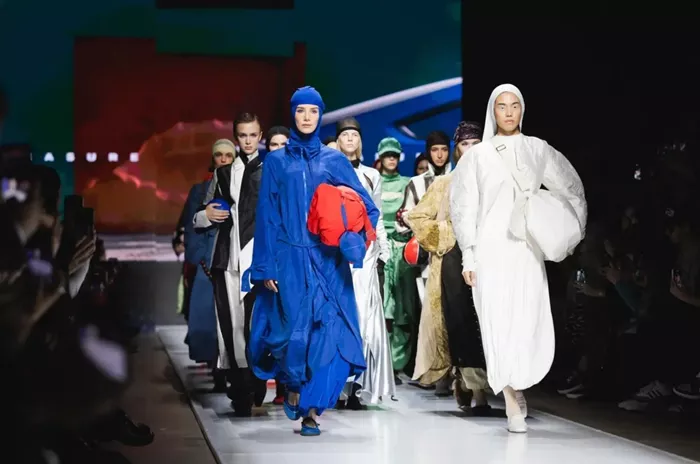For decades, global fashion has been dominated by the established powerhouses of Paris, London, New York, and Milan. But as the industry faces shifting cultural dynamics, environmental challenges, and growing calls for inclusivity, new voices are emerging from unexpected corners of the world. A key player in this evolution is the BRICS International Fashion Federation (BRICS IFF), a coalition formed during the BRICS+ Fashion Summit in Moscow from October 3-5, 2024. Representing Brazil, Russia, India, South Africa, Indonesia, Egypt, and other emerging markets, the Federation aims to reshape global fashion through collaboration, sustainability, and cultural heritage.
A Turning Point for Fashion
The BRICS IFF signals a turning point in the fashion industry’s evolution. Nichole Bess, founder of Noir Fashion Week in New York, highlighted the importance of the Federation, calling it a “significant shift” toward greater diversity, representation, and inclusivity in fashion. She believes emerging markets will drive new trends, while collaborative platforms like BRICS IFF will foster knowledge-sharing and elevate sustainable practices.
Ajai Vir Singh, Managing Director of Colombo Fashion Week in Sri Lanka, echoed these sentiments, noting that many designers in emerging markets struggle to access international platforms. He sees the BRICS IFF as an opportunity to break these barriers, offering designers a chance to scale their businesses, connect with global markets, and present fresh, innovative ideas.
A Forum for Global Exchange
The BRICS+ Fashion Summit is not just a networking event but a forum for creative and economic exchange. It brings together designers, policymakers, and industry leaders from over 100 countries. Camila Ortega, CEO of Nicaragua Diseña, emphasized that fashion transcends borders and represents culture and passion. She believes platforms like BRICS IFF can help redefine global creativity by fostering international collaborations.
South Africa’s Stephen Manzini, founder of Soweto Fashion Week, sees enormous potential in cross-border partnerships, such as joint exhibitions showcasing South African and Russian designs. These initiatives, he believes, could create a lasting cultural and economic impact.
Supporting Emerging Talent and Sustainable Fashion
Ali Charisma, Director of the Indonesian Fashion Chamber, praised the BRICS IFF for providing invaluable opportunities for emerging designers. He believes it can support talent development, mentorship, and the promotion of ethical, sustainable practices within the industry. These values align with the Federation’s broader goal of fostering inclusivity and diversity in global fashion.
Can BRICS Compete with Fashion Giants?
The success of established fashion capitals like Paris and New York is the result of decades of investment in education, infrastructure, and innovation. BRICS IFF is attempting to close the gap by launching a multicultural education program that brings together fashion experts from countries like Italy and the Netherlands. However, many BRICS nations still face significant challenges, including underdeveloped supply chains, limited access to funding, and inconsistent regulatory environments, which hinder the growth of local designers.
Despite these obstacles, Bess believes institutions like the BRICS IFF can play a crucial role in supporting designers from emerging markets, even beyond their member countries. She points to the Federation’s potential to offer exposure, mentorship, and access to new markets as essential tools for fostering global fashion talent.
A Showcase of Cultural Heritage
At Moscow Fashion Week, held alongside the Summit, designers from BRICS nations showcased collections that blended tradition with innovation. South Africa’s Tshegofatso By Design reinterpreted traditional African garments with a grunge twist, while China’s KenSun modernized cheongsam-inspired dresses. Russian brand SaiJamin incorporated elements of Circassian folk costumes, and Yakutsk’s INNIKI explored spiritual themes through designs that represented nature and the cosmos.
Sustainability was also a prominent theme. Indonesian brand RAEGITAZORO used leftover materials, and Moscow-based by /DAS/ relied on upcycled fabrics. These efforts underscored the need for scalable solutions that make sustainable fashion accessible to all.
The Road Ahead
Despite the excitement surrounding the BRICS IFF, experts recognize the challenges ahead. Bess notes that the decentralization of fashion authority will help empower diverse voices, but the industry must also address infrastructure gaps and skepticism about the scalability of sustainability initiatives. Sunil Sethi, Chairman of the Fashion Design Council of India, warned that while the BRICS+ Fashion Summit has laid a foundation, there is a risk that BRICS fashion may remain a niche interest rather than a global force. The BRICS IFF represents a promising opportunity for emerging markets to disrupt the fashion industry. However, as the Federation stands at a crossroads, its ability to redefine global fashion norms remains to be seen. Only time will tell if it can establish itself as a true rival to the fashion capitals of the world.
Related topics:
- Alexa Chung and Londoners Embrace This Winter’s Chicest Cardigan Trend
- Kim Kardashian Sparks a Millennial Fashion Revival with Her Latest Life Update
- Cameron Brink Nails a Bold Fall Fashion Trend in Gorgeous New Photos

